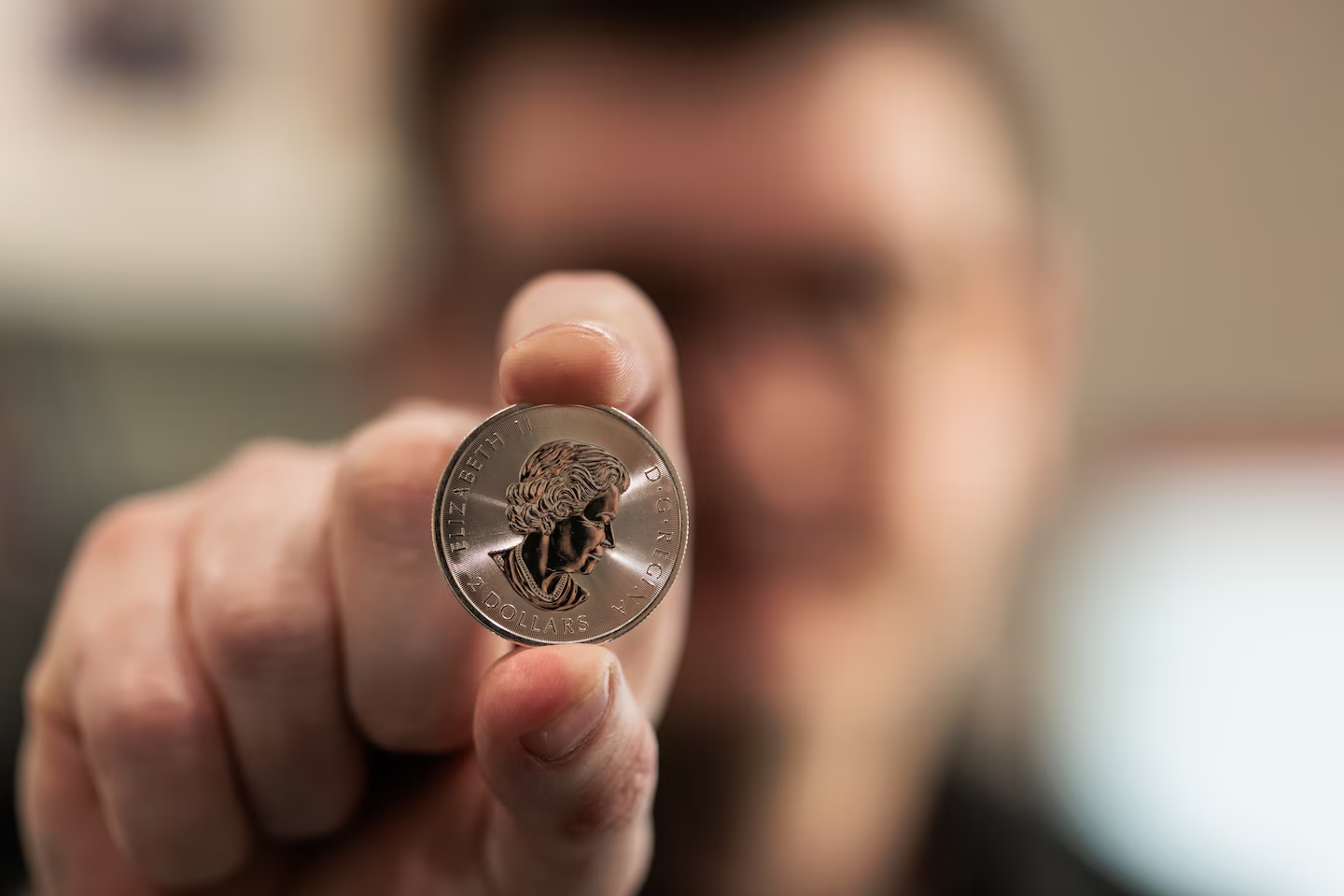Buying gold and silver coins is a popular investment strategy for those looking to diversify their portfolios, hedge against inflation, or even collect rare and valuable pieces of history. But when it comes to purchasing coins online, many buyers are left wondering: How do online coin dealers set their prices? Why do the prices of gold and silver coins vary from one dealer to another? And how can buyers ensure they’re paying a fair price for their coins?
In this blog post, we will explore the factors that influence how online coin dealers set their prices, break down the components of a coin’s cost, and explain the difference between the spot price, premium, and markup. Whether you are a seasoned investor or a first-time buyer, understanding how prices are determined will help you make better-informed decisions when buying coins.
1. The Spot Price: The Foundation of Coin Pricing
At the core of every gold and silver coin’s price lies the spot price. This is the current market value of a specific metal per ounce, as determined by global commodities markets. For gold, silver, platinum, and other precious metals, the spot price fluctuates constantly throughout the day based on various economic and geopolitical factors.
What is the Spot Price?
The spot price of a metal refers to the price of that metal for immediate delivery, usually quoted in terms of per ounce. It is the global benchmark for pricing precious metals.
- Gold Spot Price: The market value for one ounce of pure gold at any given moment.
- Silver Spot Price: The current market price of one ounce of pure silver.
The spot price is determined by the collective buying and selling activity on international commodities exchanges, most notably the New York Mercantile Exchange (NYMEX), London Metal Exchange (LME), and COMEX. These exchanges are where traders and investors buy and sell gold and silver in both physical and futures contracts.
Spot Price and Online Coin Dealers
The spot price serves as the baseline for the price of a gold or silver coin. However, it’s important to note that online coin dealers don’t sell coins at the exact spot price. They use the spot price as a starting point and then add premiums, which cover costs like production, distribution, and profit.
The spot price can vary slightly depending on the market and time of purchase. As a buyer, it’s important to keep an eye on the current spot price of the metal to ensure you’re getting a fair deal. Websites like Kitco, Bloomberg, and Reuters provide real-time updates on the spot price of gold and silver.
2. Understanding the Premium
While the spot price gives you an idea of how much the raw material is worth, online coin dealers sell their products at a premium over the spot price. This premium accounts for the dealer’s additional costs, including minting, distribution, and markup.
What is a Premium?
A premium is the amount added to the spot price of a coin or bar. It covers:
- Production Costs: Minting the coin or bar involves refining the metal, designing the coin, and stamping it. These processes contribute to the final price.
- Distribution Costs: Coins are distributed to dealers, who then sell them to customers. This involves transportation, handling, and storage costs.
- Dealer Profit: Like any business, coin dealers mark up their prices to make a profit.
The premium is typically expressed as a dollar amount over the spot price. For example, if the spot price of gold is $1,800 per ounce and a coin dealer is selling a coin with a $50 premium, the total price would be $1,850.
Factors Affecting the Premium
Several factors influence how much premium a dealer adds to the base spot price of a coin:
- Coin Type: The type of coin significantly impacts its premium. Popular bullion coins like the American Gold Eagle or Canadian Gold Maple Leaf typically have lower premiums due to their high mintage and mass production. Rare or collectible coins, such as limited edition issues or numismatic coins, can carry much higher premiums due to their rarity and demand.
- Supply and Demand: Market demand can greatly affect the premium added to a coin. If a particular coin is in high demand, whether due to a price increase in the metal or collector interest, dealers can charge a higher premium. For example, if there is a global economic crisis or an increase in demand for safe-haven investments, premiums for gold coins can rise.
- Minting and Production: Coins that are harder to produce or come from limited runs will generally carry a higher premium. For instance, coins from prestigious mints or limited-edition collector’s coins will typically have a higher premium because of their perceived value.
- Condition of the Coin: The condition of the coin, especially for rare and collectible coins, affects the premium. Coins that are graded as MS (Mint State) or PR (Proof) will often carry higher premiums than ungraded or lower-grade coins.
- Dealer’s Overhead Costs: Larger dealers with significant distribution networks might be able to offer lower premiums because they operate at a higher volume, while smaller, niche dealers might charge higher premiums due to their lower volume and increased operational costs.
3. The Markup: Dealer’s Profit Margin
The markup is the price that a coin dealer adds above the premium and spot price. This is the dealer’s profit margin and is typically factored into the final price of the coin.
How Markups Vary Among Dealers
- Reputable Dealers: Trusted dealers usually have smaller markups, as they operate with higher volumes, lower overhead, and a strong reputation for offering competitive prices. Their markups are often more transparent and consistent, and you may find that their premiums and markups are similar to those of other reputable dealers.
- Less Transparent Dealers: Dealers with little to no reputation, or those operating outside established marketplaces, may add high markups to their coins. This is especially true for rare or numismatic coins, where dealers may exploit the lack of market knowledge on the part of the buyer.
Markup Based on Coin Type
The markup may vary depending on the type of coin:
- Bullion Coins: Popular bullion coins like the American Gold Eagle, American Silver Eagle, Krugerrand, or Canadian Maple Leaf typically have lower premiums and markups due to their mass production and popularity.
- Numismatic or Collectible Coins: Rare coins or those with historical significance often have higher markups because of their desirability among collectors and investors.
- Proof Coins: Coins that are specially minted with polished dies to create a mirror-like finish tend to carry higher premiums and markups.
Dealers may set their markup based on their business model, target market, and the cost of doing business. Larger, well-established dealers may have a markup of 5–10%, while smaller dealers may mark up coins by 20% or more, particularly for collectible items.
4. Additional Fees and Charges
When buying coins online, it’s important to be aware of additional fees and charges that may apply. These can significantly affect the final price of the coin.
Shipping and Insurance
Many online dealers charge shipping fees, which can vary depending on the size of the order, the shipping method, and whether insurance is included. Since gold and silver coins are high-value items, insurance is often recommended, especially for large orders. Shipping charges can range from a few dollars to several hundred dollars, depending on the size of the order and the level of insurance required.
Taxes
Sales tax may apply depending on your location and the type of coins you’re purchasing. In some U.S. states, sales tax is exempt for purchases of gold or silver coins, while in others, taxes may apply. It’s essential to check your local tax regulations and factor that into the total cost of your purchase.
Buyback Fees
Some dealers offer buyback programs where you can sell your gold or silver coins back to the dealer. These programs often come with fees, and the price the dealer is willing to pay may be lower than the price you initially paid for the coins.
5. How to Compare Prices Among Dealers
Once you understand the components of coin pricing, it becomes easier to compare prices from different dealers. Here are a few tips for comparing prices:
- Check Multiple Sources: Look at several online dealers, including well-known platforms like APMEX, JM Bullion, SD Bullion, and Kitco. Comparing multiple dealers will give you a clearer sense of the current market price for the coins you’re interested in.
- Monitor Spot Price Trends: Keep track of the spot price of gold and silver through reliable websites. Knowing the current spot price allows you to evaluate whether the premiums and markups are in line with current market conditions.
- Look for Discounts or Promotions: Some dealers offer discounts or promotions on specific coins or during certain times of the year. Sign up for email alerts or newsletters to stay informed about sales or special offers.
- Understand the Full Price: Don’t just focus on the spot price and premium; factor in additional costs like shipping, insurance, and taxes. The total price is what matters most.
Conclusion
The price of gold and silver coins is determined by several factors, with the spot price serving as the baseline, followed by premiums and markups added by dealers to cover production, distribution, and profit. By understanding how these elements work together, you can make more informed decisions when purchasing coins online.











